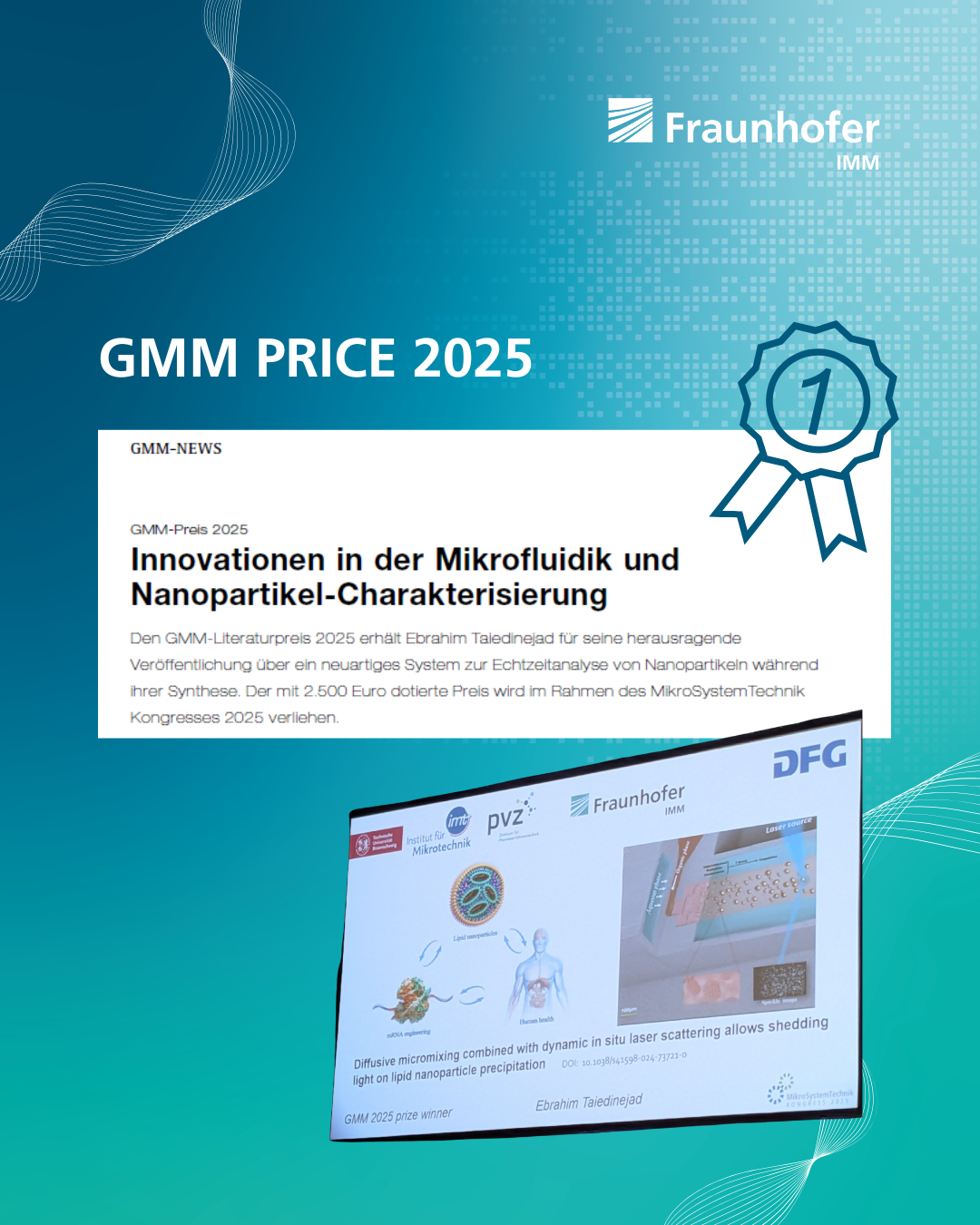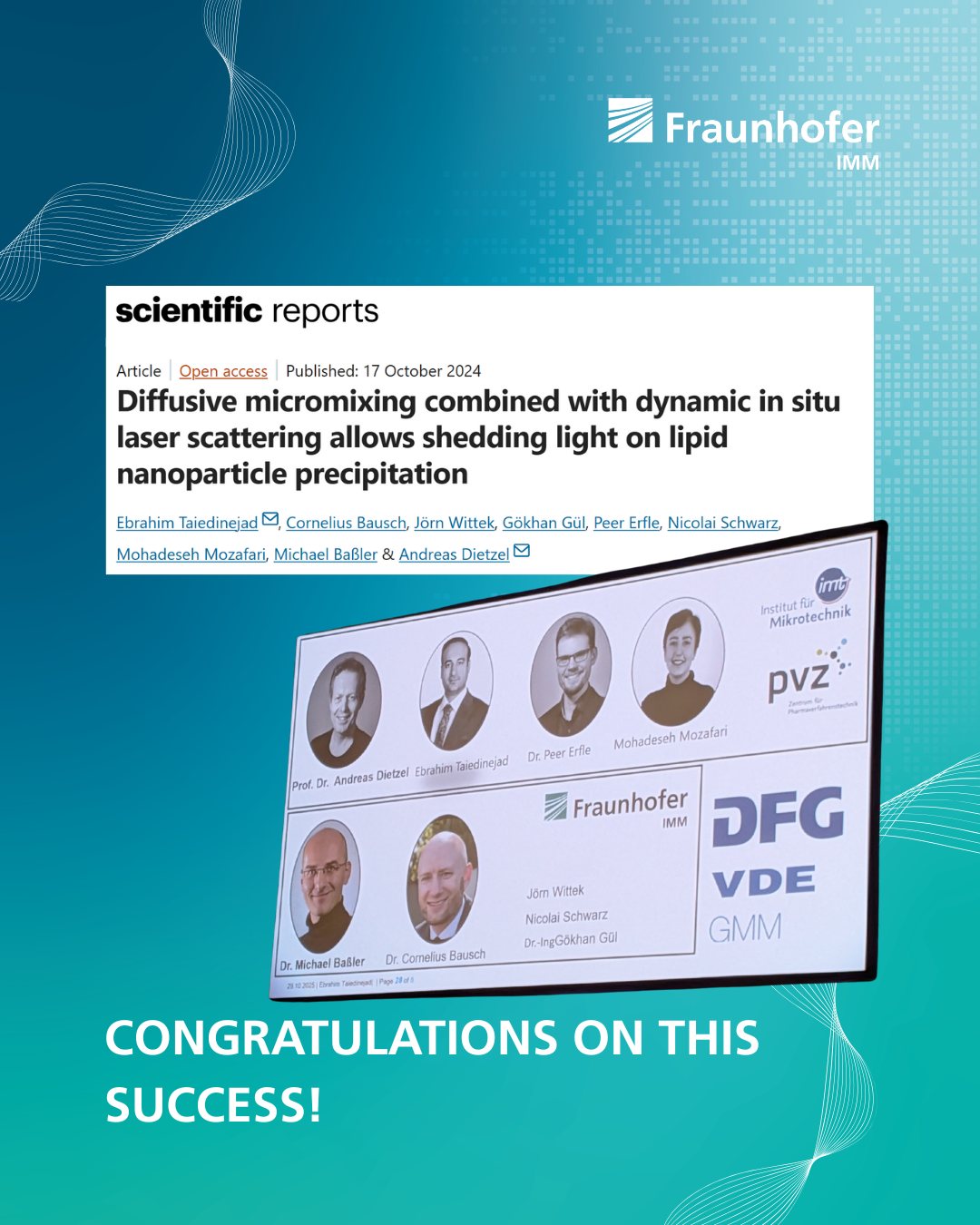Award
GMM Prize 2025 for publication on real-time analysis of nanoparticles
The team of authors received the GMM Literature Prize 2025 for their publication on a novel system for real-time analysis of nanoparticles during their synthesis. The prize was presented to the lead author, Ebrahim Taiedinejad, at the MikroSystemTechnik Kongress 2025.

The team of authors received the GMM Literature Prize 2025 for their publication on a novel system for real-time analysis of nanoparticles during their synthesis. The prize was presented to the lead author, Ebrahim Taiedinejad, for his paper entitled “Diffusive micromixing combined with dynamic in situ laser scattering allows shedding light on lipid nanoparticle precipitation” at the MikroSystemTechnik Kongress 2025.
The paper describes a novel 3D microfluidic system that enables the continuous and highly efficient production of lipid nanoparticles (LNPs) in terms of particle size and polydispersity and, for the first time, allows in-situ real-time analysis of their size and size distribution directly in the microchannel. Direct insight into the synthesis process has been one of the greatest challenges to date.
The GMM awards its literature prize annually for an outstanding publication in the fields of Microelectronics, microsystems, and precision engineering.
We take this opportunity to once again congratulate the team of authors.
Abstract and outlook

Pharmaceutical formulations are increasingly based on drug nanoparticles or carrier nanoparticles encapsulating drugs or mRNA molecules. Sizes and monodispersity of the nanoparticles regulate bioavailability, pharmacokinetics and pharmacology. Microfluidic mixers promise unique conditions for their continuous preparation. A novel microfluidic antisolvent precipitation device was realized by two-photon-polymerization with a mixing channel in which the organic phase formed a sheet with a homogeneous thickness of down to 7 μm completely wrapped in the aqueous phase. Homogeneous diffusion through the sheet accelerates mixing. Optical access was implemented to allow in-situ dynamic light scattering. By centering the thin sheet in the microchannel cross-section, two important requirements are met. On the one hand, the organic phase never reaches the channel walls, avoiding fouling and unstable flow conditions. On the other hand, in the sheet positioned at the maximum of the parabolic flow profile the nanoparticle velocities are homogenized which enables flow-compensated Dynamic Light Scattering (flowDLS). These unique features allowed in-situ particle size determination for the first time. Monitoring of lipid nanoparticle precipitation was demonstrated for different rates of solvent and antisolvent flows. This breakthrough innovation will not only enable feedback control of nanoparticle production but will also provide new insights into the dynamics of nanoparticle precipitation.
In the future, the technology could be used to monitor nanoparticles within only a few milliseconds after their nucleation. The position of the measurement volume or the flow rate could act as the representative of the time axis for their formation process. Together with other tools such as molecular dynamics simulations, completely novel insights into particle-forming processes might be gathered in this manner. For pharmaceutical companies, this enables a pathway towards speedy process developments at minimal sample volumes, which is desperately needed for processes such as lipid nanoparticle formulation involving costly chemicals.
 Fraunhofer Institute for Microengineering and Microsystems IMM
Fraunhofer Institute for Microengineering and Microsystems IMM